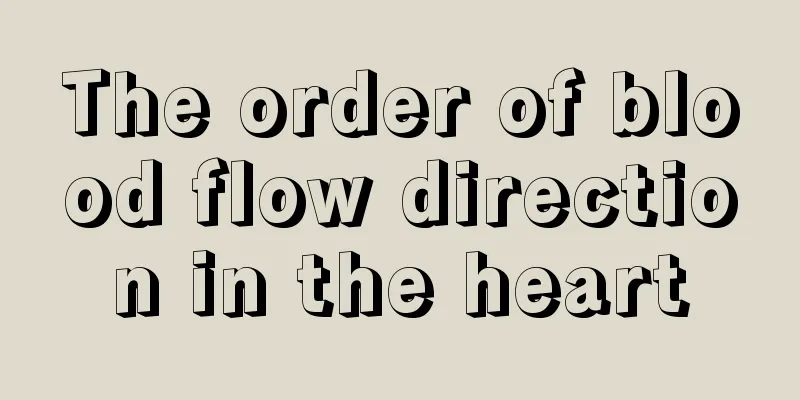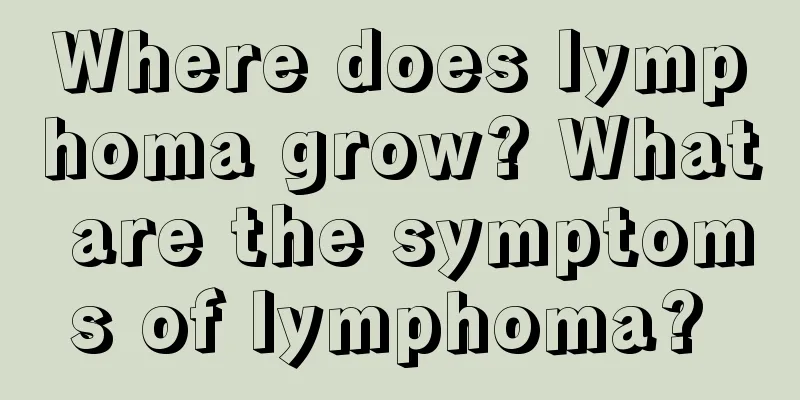The order of blood flow direction in the heart

|
The heart is one of the most important parts of our body and is closely connected with our life. In the medical field, whether a person's heart beats or not is usually regarded as one of the important signs of life. The heart is mainly divided into the left ventricle and the right ventricle, and the direction of blood flow is closely related to our physical condition. Therefore, it is necessary for patients with heart disease to understand the order of blood flow direction in the heart. Under the action of the heart pump, blood flows in a certain direction through the heart and vascular system over and over again. It includes systemic circulation and pulmonary circulation, which are connected to each other to form a complete circulatory system. (A) Systemic circulation: When the ventricles contract, bright red blood (arterial blood) containing more oxygen and nutrients is output from the left ventricle, through the aorta and its branches, to the capillaries in all parts of the body, for intra-tissue material and gas exchange. The blood becomes slightly purple blood (venous blood) containing tissue metabolic products and more carbon dioxide, and then flows through the veins at all levels, finally merging into the superior and inferior vena cava and flowing back to the right atrium. The blood circulation along the above pathway is called systemic circulation, also known as the macrocirculation. The main characteristics of systemic circulation are its long distance and wide range of flow. It nourishes all parts of the body with arterial blood and transports metabolic products and carbon dioxide back to the heart. (ii) Pulmonary circulation: venous blood with less oxygen and more carbon dioxide is transported from the right ventricle through the pulmonary artery to the capillary network around the alveoli, where it exchanges gases with the alveoli. That is, the venous blood releases carbon dioxide (which is exhaled out of the body by the lungs) and at the same time absorbs oxygen from the alveoli through inhalation, thus changing the dark red venous blood into bright red arterial blood (which contains more oxygen and less carbon dioxide). This blood is then transported through the pulmonary veins at all levels and finally injected into the left atrium. The blood circulation along the above pathway is called pulmonary circulation, also known as small circulation. The characteristic of pulmonary circulation is that it is short in distance, passes only through the lungs, and mainly converts venous blood into oxygen-rich arterial blood. (III) Coronary circulation: The purpose of coronary circulation is to provide the heart with the nutrients and oxygen it needs and to carry away waste. It is a circulation in which blood flows directly from the coronary artery at the base of the aorta to the capillary network inside the myocardium and finally flows back to the right atrium through the veins. 2. Circulation energy: The flow of blood requires energy, which is mainly generated by the beating of the heart. The energy of the beating of the heart is ultimately generated by the mitochondria in the cells, so the mitochondrial content in myocardial cells is quite large. Mitochondria are the place where energy is produced. The activities inside mitochondria are mainly the second and third stages of aerobic respiration. Aerobic respiration is divided into three stages: The first stage: glucose dehydrogenation to produce reduced hydrogen, pyruvate and a small amount of ATP. This stage takes place in the matrix of the cytoplasm. Phase 2: Pyruvate continues to dehydrogenate, and water molecules are required to participate in the reaction to produce reduced hydrogen, carbon dioxide and a small amount of ATP. The third stage: The hydrogen removed in the first two stages combines with oxygen to form water. This stage produces a large amount of ATP. ATP, also known as adenosine triphosphate or ATP, is mainly composed of adenine and ribose to form adenosine. Adenosine is combined with three connected phosphate groups through the 5th hydroxyl group in ribose. When ATP works, it removes one phosphate to form ADP. This process releases energy. 3. Physiological function: The main significance of blood circulation is to ensure the body's metabolism. The various tissues of the animal body obtain various nutrients, water, and oxygen from the blood, and use these substances for oxidation to generate heat energy to ensure normal function; at the same time, waste products such as carbon dioxide, urea, uric acid, etc. produced by metabolism are discharged into the blood and transported to the respiratory organs and excretory organs respectively, and excreted out of the body to maintain the relative constancy of the physical and chemical properties inside the tissues. In addition, hormones secreted by endocrine glands are transported to various parts of the body through circulation to regulate the body's physiological functions. |
<<: Lower abdominal pain and a feeling of defecation
>>: Anti-human globulin test positive
Recommend
How to deal with cervical precancerous lesions? 3 dietary treatment methods for cervical precancerous lesions
There are four manifestations of cervical precanc...
Is thyroid cancer considered cancer?
Thyroid cancer is a relatively common malignant t...
The role and efficacy of digestive enzymes
Digestive enzymes can promote digestion and also ...
Can brain cancer be treated in its early stages?
Can brain cancer be treated in its early stages? ...
How many teeth do children need to replace?
It is normal for children to change their teeth. ...
The efficacy and function of cold onion
Although onions taste a bit spicy, they have many...
What is the difference between getting angry and getting inflamed
Sometimes we feel like there is a ball of fire in...
What are the effects of river clam meat
We are all familiar with river clams. They can be...
Newborns need to be fed as soon as they wake up
Many newborns have a habit of falling asleep whil...
What plants are suitable for the office
Many people keep some flowers and plants in the o...
What is the cause of teratoma
Speaking of teratoma, I believe you will show an ...
tspot test positive
I believe that many patients are not familiar wit...
Late-stage medication for teratoma
What are the late-stage medications for teratoma?...
Butter-free cookie recipe
Cookies are a niche pastry that are priced for th...
What causes split urine?
If some friends find that their urine is forked a...









